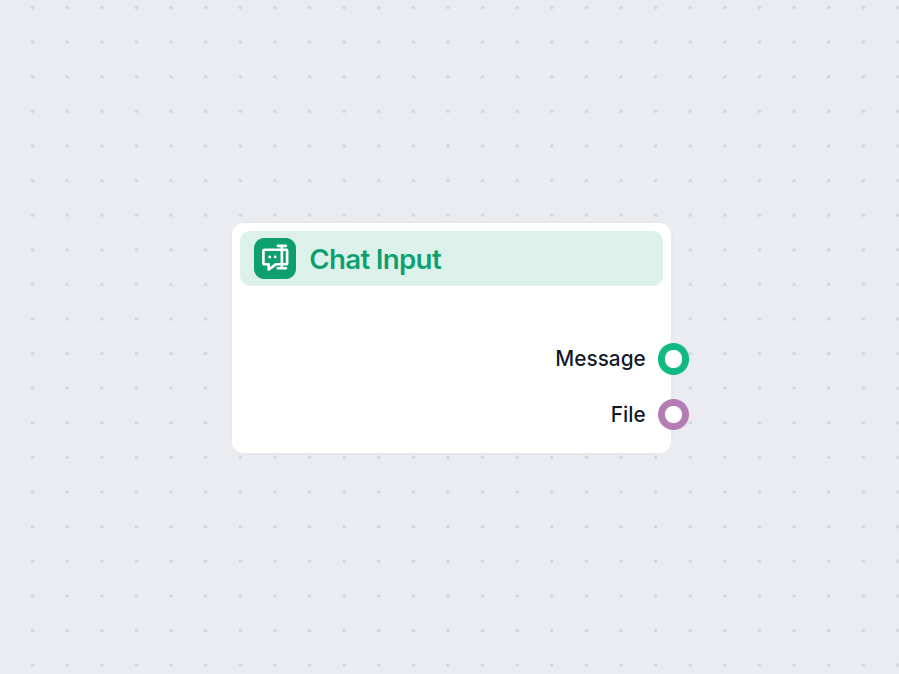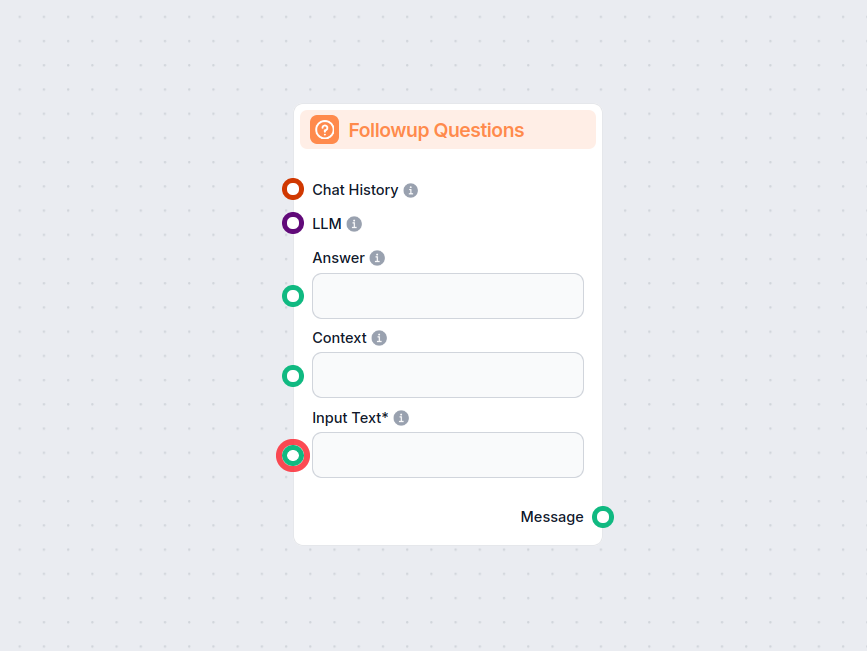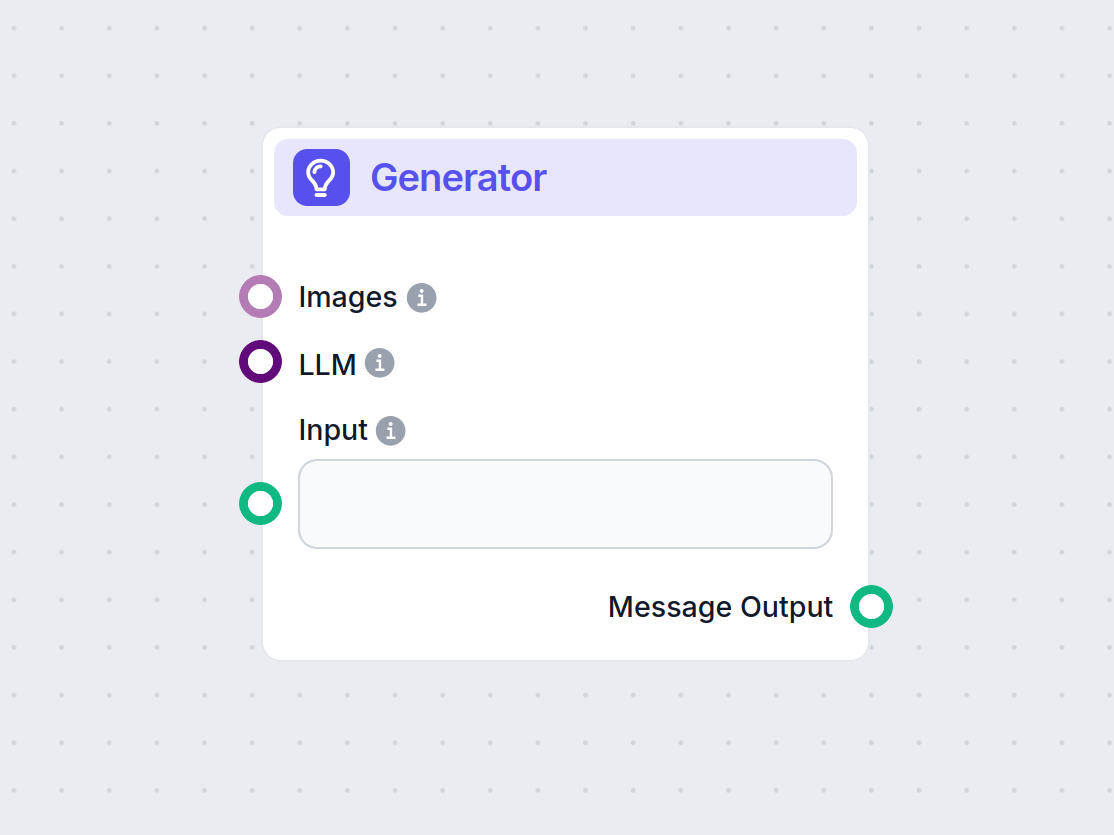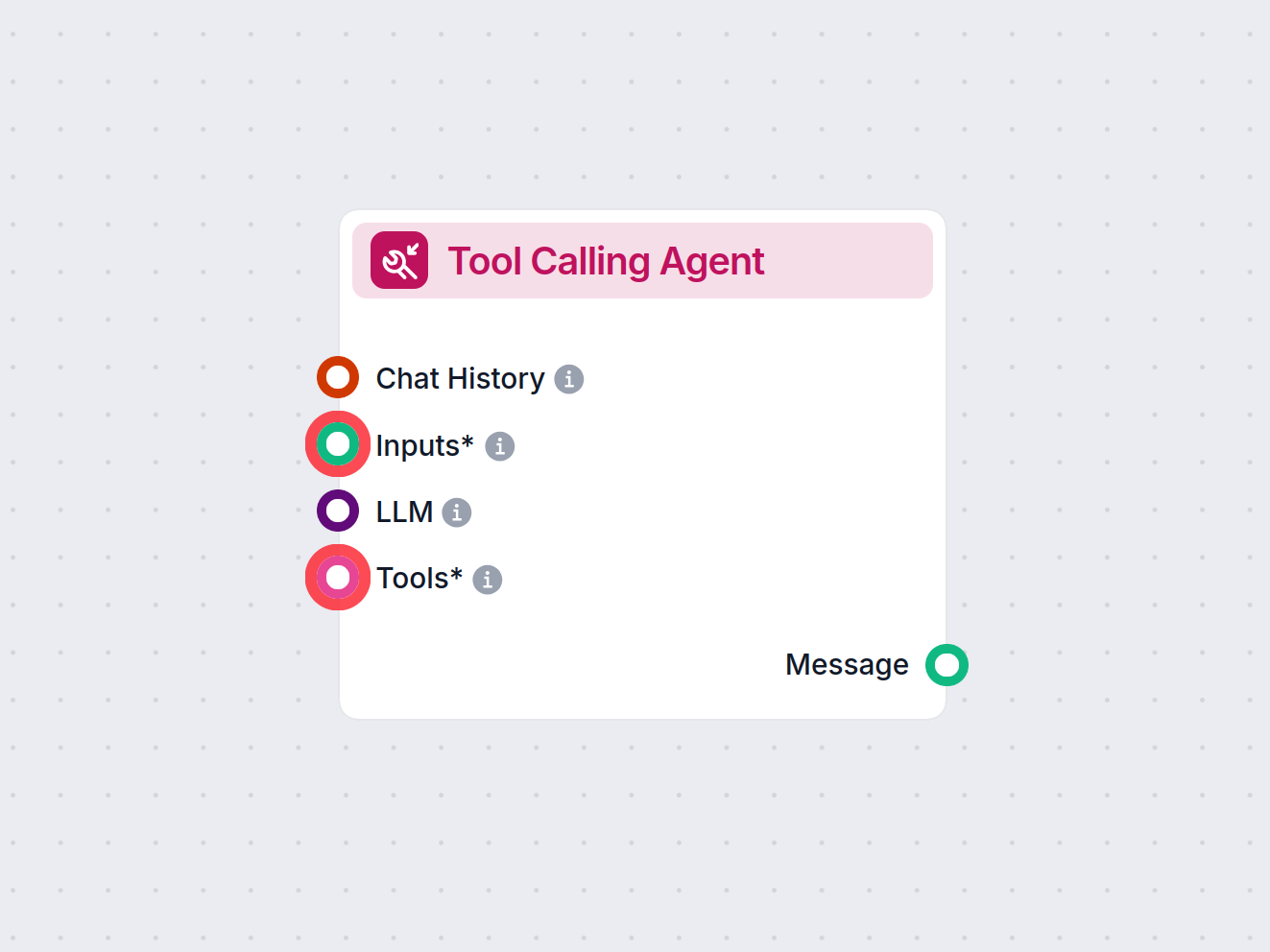
ChatInput
Die Chat Input-Komponente in FlowHunt initiiert Benutzerinteraktionen, indem sie Nachrichten aus dem Playground erfasst. Sie dient als Startpunkt für Flows und ...

Erstellen Sie automatisch gezielte Anschlussfragen mithilfe von KI und Chat-Kontext, um tiefere und bedeutungsvollere Gespräche zu führen.
Komponentenbeschreibung
The Followup Questions component is designed to help users generate insightful follow-up questions based on a provided context, answer, and conversation history. This functionality is especially valuable in AI-driven workflows where deepening understanding of a topic or clarifying ambiguities is important—such as in chatbots, tutoring systems, or knowledge exploration tools.
This component takes an input text (typically a user’s question or statement), and, using a language model, generates a list of follow-up questions that the user should ask to gain a deeper or clearer understanding of the topic. It can leverage additional information like the current chat history, context, and previous answers to generate more precise and relevant questions.
The component supports several input fields, some optional and some required. Here’s an overview:
| Input Name | Type | Required | Description |
|---|---|---|---|
| Input Text | String (Message) | Yes | The main text input (user query or statement) to base follow-up questions on. |
| Chat History | InMemoryChatMessageHistory | No | The conversation history, which helps the model generate better-targeted follow-up questions. |
| LLM | BaseChatModel | No | The language model to use for question generation. |
| Answer | String (Message) | No | The answer to the input text, which can help improve the relevance of the follow-up questions. |
| Context | String (Message) | No | Additional context to generate more focused questions. |
| Number of questions | Integer | Yes | Specifies how many follow-up questions to generate. Default is 5. |
| System Message | String | No | An optional system-level message to modify or steer the prompt sent to the language model. |
| Feature | Benefit |
|---|---|
| Context-aware | Generates more relevant questions |
| Model-agnostic | Can work with different LLMs |
| Customizable output | Control over number and style of questions |
| History integration | Takes prior conversation into account |
By integrating the Followup Questions component, you can make your AI-driven workflows more interactive, informative, and user-friendly.
Sie generiert relevante Anschlussfragen basierend auf Nutzereingaben, Kontext und Chatverlauf und hilft so, Themen gründlicher zu erkunden.
Ja, Sie können die Anzahl der generierten Anschlussfragen an Ihren Bedarf anpassen.
Ja, durch Einbeziehung des Chatverlaufs kann die Komponente präzisere und kontextbezogene Anschlussfragen erstellen.
Sie können jedes unterstützte LLM (Large Language Model) in FlowHunt zur Fragengenerierung anbinden.
Verwenden Sie sie in Flows, in denen Sie Nutzer zu einem tieferen Verständnis oder weiteren Nachfragen führen möchten, z. B. als Rechercheassistent, Kundenservice-Bot oder Bildungs-Chatbot.
Verbessern Sie Ihre KI-Flows durch dynamische Generierung von Anschlussfragen für intelligentere und ansprechendere Gespräche.
Die Chat Input-Komponente in FlowHunt initiiert Benutzerinteraktionen, indem sie Nachrichten aus dem Playground erfasst. Sie dient als Startpunkt für Flows und ...
Entdecken Sie die Komponente Generator in FlowHunt – leistungsstarke, KI-gesteuerte Textgenerierung mit Ihrem gewählten LLM-Modell. Erstellen Sie mühelos dynami...
Entdecken Sie den Tool Calling Agent in FlowHunt – eine fortschrittliche Workflow-Komponente, die es KI-Agenten ermöglicht, externe Tools intelligent auszuwähle...
Cookie-Zustimmung
Wir verwenden Cookies, um Ihr Surferlebnis zu verbessern und unseren Datenverkehr zu analysieren. See our privacy policy.

